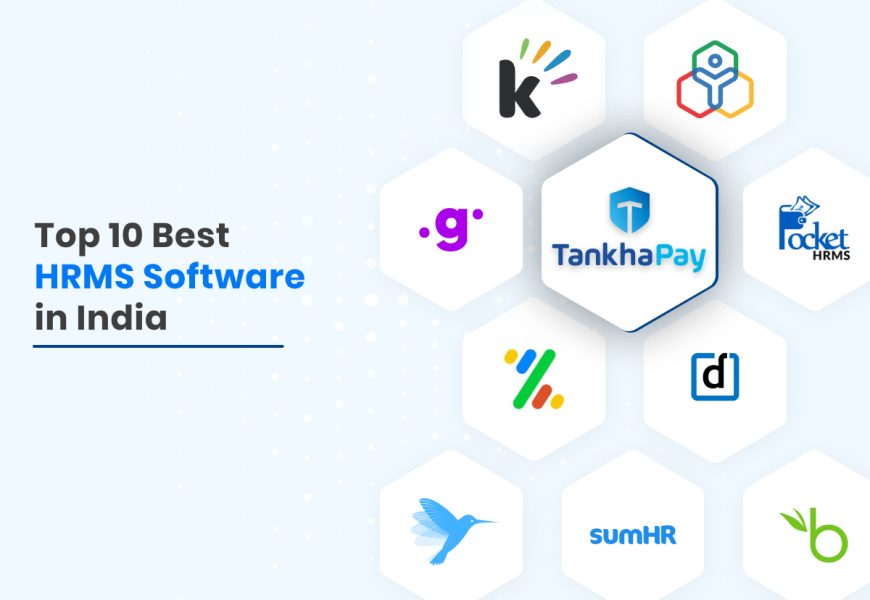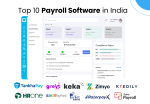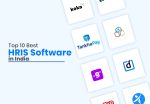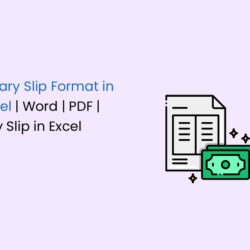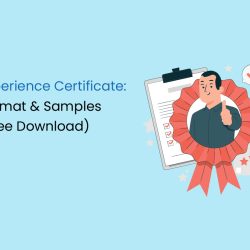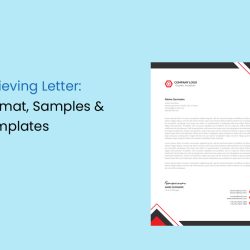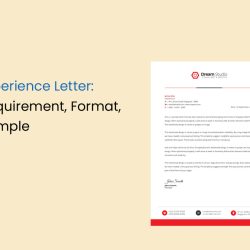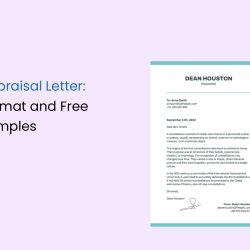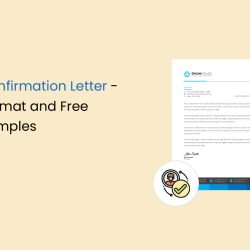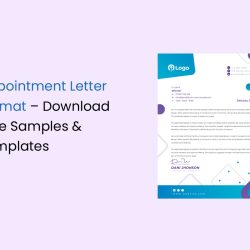What is HRMS Software?
An HRMS (Human Resource Management System) is more than just attendance or payroll software—it’s a single digital platform that simplifies and automates the entire employee journey. From hiring and onboarding to managing payroll, compliance, performance reviews, and even exit formalities, an HRMS keeps everything connected. Instead of juggling spreadsheets or multiple standalone tools, HR teams can work from a single platform, ensuring faster processes, fewer errors, and complete compliance.
Difference between HRMS, HRIS and HCM
These terms are often used interchangeably, but they aren’t the same.
- HRIS (Human Resource Information System)- Primarily focuses on storing employee data—such as demographics, job details, and compliance records. Think of it as the “system of record.”
- HCM (Human Capital Management)- A broader concept that goes beyond administration to include talent acquisition, performance, learning, and employee engagement. It’s strategy-driven.
- HRMS (Human Resource Management System)- It combines the core data management of HRIS with the strategic features of HCM, while also integrating payroll, compliance, attendance, and reporting.
In short: HRIS manages information, HCM manages people strategy, and HRMS manages both—plus compliance and payroll.
Why HRMS Software is Essential in Modern Workforce Management
Workforces today are hybrid, distributed, and increasingly compliance-heavy—especially in markets like India. Managing employees manually leads to errors, delays, and compliance risks. HRMS software solves this by:
- Automating repetitive HR Services (payroll outsourcing, attendance, leave).
- Ensuring 100% compliance with labour laws and tax regulations.
- Empowering employees with self-service portals for payslips, leave requests, and updates.
Providing business leaders with real-time data and analytics to make smarter workforce decisions.
For organizations scaling across states or adopting flexible work models, HRMS is no longer optional—it’s the backbone of workforce efficiency.
Evolution of HRMS Software
HR technology has come a long way.
- Phase 1 – Administrative Tools: Early HRMS solutions were little more than payroll processors and record-keeping systems.
- Phase 2 – Integrated Platforms: Over time, features like attendance, compliance, and performance management were added to create end-to-end HR suites.
- Phase 3 – Intelligent HRMS: The role of HR software in India has changed dramatically. It’s no longer just a digital filing cabinet or a payroll tracker. Today’s HRMS works in the cloud, uses automation to cut down on repetitive tasks, and even applies AI to predict workforce trends. In other words, it doesn’t just manage people data—it helps HR leaders and CXOs make smarter calls about productivity, performance, and planning. That’s a big shift: from an admin tool to a genuine business partner.
In today’s business environment, HRMS software isn’t just about “managing employees”—it’s about building connected, compliant, and future-ready workplaces.
Importance of HRMS Software in India
India’s business scene is anything but simple. A startup hiring its first team and a large enterprise managing thousands of employees both face HR hurdles—but of very different kinds. Some struggle with keeping track of basic processes, while others are buried under compliance requirements or inefficiencies that slow them down. An HRMS helps cut through this chaos. It pulls everything—payroll, attendance, compliance, performance—into one place, so HR teams can focus less on chasing data and more on driving real impact.
Challenges in the Indian Context
Managing employees in India is never straightforward.
- Companies must handle PF, ESI, TDS, gratuity, and labour laws across multiple states.
- Contract and gig workforce adds extra complexity in payroll and compliance.
- Frequent policy changes leave HR teams stressed and vulnerable to penalties.
Without HRMS software, errors are common, compliance risks are high, and employee dissatisfaction increases.
Why MSMEs, Startups, and Enterprises Need It Differently
The role of HRMS software varies with business size
- Startups: Young businesses move fast, but they often don’t have the luxury of large HR teams. What they really need is agility—tools that can handle payroll, compliance, and employee management without eating into precious budgets or slowing growth.
- MSMEs: For small and mid-sized companies, the biggest pain points are payroll errors, attendance hassles, and the constant risk of compliance penalties. An HRMS helps by automating repetitive work, reducing mistakes, and giving owners more time to focus on growing the business.
- Enterprises: Large organisations deal with complex structures—multi-state compliance, large employee bases, and existing systems that can’t afford disruptions. They look for advanced analytics, smooth integrations, and robust HRMS platforms that can scale without compromising efficiency.
Despite these differences, HRMS software provides one common advantage—scalability as the business grows.
Relevance in Remote & Hybrid Work
India has firmly moved towards a hybrid way of working, and HR leaders are now focused on managing this new reality without losing control over processes. That’s where a smart HRMS makes the difference.
- Accurate attendance tracking that works seamlessly even when employees log in from home or different locations.
- Easy collaboration through self-service portals and mobile apps, so people can access what they need without endless back-and-forth.
- Clear workflows that build trust and accountability, ensuring managers and employees stay aligned.
With these capabilities, businesses can manage distributed teams confidently maintaining both efficiency and compliance as the workforce grows more flexible.
Regulatory Environment in India
India is moving towards digital-first compliance. With new labour codes, stricter audits, and digital filings, manual HR is unsustainable. HRMS software:
- Updates statutory changes automatically.
- Generates compliant reports instantly.
- Protects organisations from costly penalties and last-minute compliance issues.
In short, HRMS software is not just an efficiency tool—it is a compliance safeguard and a growth enabler in India.
Key Features of HRMS Software in India
HRMS software combines essential HR functions into one platform. Each feature saves time, reduces errors, and drives business results.
1. Payroll Management
Manual payroll processing is a surefire way to make mistakes; incorrect tax computations, missed deadlines, or postponed salaries may quickly damage confidence. By automating tax deductions, payslip production, and salary processing, the best payroll software in India relieves HR personnel of this burden. The result? HR saves many hours, employees receive correct and timely pay, and organisational trust and morale are greatly increased.
2. Attendance & Leave Tracking
Keeping attendance and leave records on spreadsheets is not just tedious—it’s risky when it comes to compliance. A modern HRMS connects attendance with leave policies, biometric systems, and even remote logins. Managers get accurate reports at a glance, while employees benefit from clear, up-to-date leave balances without having to chase HR.
3. Employee Self-Service (ESS)
With employee self-service, employees regain power. They don’t have to wait on HR to get paystubs, ask for leave, or update their own information. This results in quicker resolutions and less back and forth for teams. It saves HR executives a tonne of time, allowing them to concentrate on strategic issues rather than mundane enquiries.
4. Performance Management
Spreadsheets and scattered reviews make it hard to track performance fairly, and most managers know how messy that can get. An HRMS brings order to the process by tying together goals, regular check-ins, and continuous feedback. Leaders gain a reliable view of team productivity, while employees get the clarity they need on their progress and future growth.
5. Recruitment & Onboarding
Hiring doesn’t stop at finding the right candidate—it’s equally about how quickly and smoothly you bring them on board. With an HRMS, everything from posting jobs to completing digital paperwork runs in a single flow. Leaders cut down on hiring costs and delays, while new employees step in with confidence from their very first day.
6. Compliance Management
India’s labour laws are notoriously complex, and can lead to penalties. An HRMS takes the stress out of compliance by automatically tracking PF, ESI, TDS, and state-specific regulations. HR leaders can focus on strategy instead of worrying about filings, while the organisation stays fully compliant, always.
7. Analytics & Reporting
HR decisions are no longer just based on intuition—they need real data. With an HRMS, managers get instant access to dashboards and reports on everything from headcount and attrition to individual performance trends. This means smarter, faster decisions, less guesswork, and better outcomes for the business.
8. Custom Workflows
No two companies run HR the same way. An HRMS lets you design custom approval chains and workflows tailored to your organisation’s needs. The result is smoother processes for employees, more control for leaders, and efficiency that actually works in real-life operations.
9. Mobile Accessibility & Cloud Deployment
HR is no longer limited to the office environment. Cloud-based HRMS allows you access at any time and from any location. Leaders control payroll, approvals, and reports while on the go. Employees also value mobile-first HR ease.
Top 10 HRMS Software in India
Choosing the correct HRMS can make or break a business’s performance in India. From payroll and compliance to labour management, each platform has its unique set of strengths. To assist you explore the possibilities, here are the ten top HRMS systems for 2025.
1. TankhaPay
TankhaPay stands out as India’s most comprehensive HRMS. It combines HR tech, payroll, compliance, Employer of Record (EOR), and apprenticeship management under NATS in a single ecosystem. Businesses with distributed teams across states benefit from its multi-state compliance engine, automated statutory updates, and direct stipend reimbursement workflows under DBT.
With 25+ years of expertise and 100,000+ employees payrolled, TankhaPay goes beyond software—it provides managed HR services to reduce the HR burden. This mix of technology + services makes it a unique one-stop solution for enterprises, MSMEs, and startups alike.
2. Darwinbox
Darwinbox is a leading enterprise-grade HRMS built for scale. It covers the entire employee lifecycle, from onboarding to performance management and payroll. Known for its mobile-first experience and configurable workflows, it helps organisations deliver a modern, employee-friendly HR experience.
The platform also supports AI-driven talent insights, enabling HR leaders to make smarter workforce decisions. Large enterprises choose Darwinbox for its robust integrations and advanced analytics that align HR strategy with business outcomes.
3. Keka
Keka has quickly become a favourite among startups and mid-sized companies in India. Its real strength lies in taking everyday HR tasks—like payroll, attendance, and performance reviews—and making them simple through a clean, intuitive interface. HR teams appreciate how easy it is to roll out, how quickly employees adapt to it, and how much smoother it makes their day-to-day work.
Beyond the basics Keka shines with its performance management and continuous feedback features. These tools keep teams motivated, aligned with goals, and clear about expectations. For businesses that want a solution that’s both cost-effective and feature-rich, Keka strikes the right balance between affordability and impact.
4. GreytHR
GreytHR is one of the most established names in payroll and compliance software, known for its strong grasp of India’s statutory requirements. The platform automates everything from payroll processing to PF, ESI, PT, and TDS filings, helping HR and finance teams run salaries with accuracy and confidence.
Beyond payroll, GreytHR offers self-service access for employees—so they can download payslips, check tax forms, or track leave balances without chasing HR. With its long presence in the Indian market, the platform has earned a reputation as a dependable choice for organisations that want payroll compliance handled without worry.
5. Zoho People
Zoho People fits seamlessly into the broader Zoho suite, making it a smart choice for companies that already rely on Zoho tools. It covers core HR functions such as attendance, leave management, and employee database, and integrates seamlessly with Zoho Books and Zoho Payroll.
Known for its flexibility and affordability, Zoho People allows organisations to configure HR workflows as they scale. With its cloud-first design and employee self-service capabilities, it’s a strong option for businesses seeking an integrated digital workplace.
6. ZingHR
ZingHR is built for large enterprises wrestling with complex HR processes. It focuses on making employee engagement, recruitment and performance management work together — not as separate modules, but as a single experience. The platform is highly configurable, so HR teams can model multi-level approvals, complex org structures and localized compliance rules without bending the business to the software. Add in AI-assisted insights and automation, and you get faster hiring cycles, clearer performance conversations, and a smoother, mobile-friendly experience that actually improves how people work.
With features like chatbots, predictive analytics, and voice-enabled HR transactions, ZingHR helps companies stay ahead in digital HR transformation. It’s especially valuable for businesses looking to future-proof HR operations with innovation and automation.
7. BambooHR
BambooHR is a well-known HRMS across the globe and is especially popular with small and mid-sized businesses, including many remote-first teams. What sets it apart is its simplicity—managers like the clean interface, employees enjoy the smooth experience, and the short learning curve makes adoption easy for everyone.
Even though it’s a global platform, Indian SMEs have also embraced BambooHR for its culture-focused features such as continuous feedback, engagement tools, and detailed reporting. It works particularly well for distributed teams that value collaboration without the complexity of heavy enterprise systems.
8. Pocket HRMS
Pocket HRMS is an India-focused cloud HRMS with a strong emphasis on payroll and mobility. It provides automated statutory updates, mobile-first features, and customisable workflows tailored for Indian businesses.
The solution also offers AI-powered HR bots, ESS portals, and robust analytics, making HR operations more agile and transparent. For growing companies seeking a balance of modern tools and statutory compliance, Pocket HRMS is a practical choice.
9. sumHR
sumHR is tailored for startups and growing SMEs that want to keep HR simple. It packs in the essentials—payroll, attendance, leave tracking, and compliance—on a lightweight platform that’s easy to set up and manage. For lean HR teams, the clean interface and affordability make it a practical choice when scaling fast without adding extra overhead.
Another plus is its flexibility. sumHR offers configurable workflows and self-service tools, so employees can manage routine tasks themselves while HR leaders keep control of the bigger picture. It’s a straightforward way for smaller companies to digitise HR processes quickly, without heavy costs or complex setups.
10. SAP SuccessFactors
SAP SuccessFactors is the HCM choice for large, complex organisations that need scale and reliability. It delivers end-to-end HR capabilities—workforce planning, learning & development, talent management, payroll, and analytics—built to handle multinational rollouts and tightly integrate with enterprise finance and ERP systems. What stands out is its ability to unify HR data across geographies, so global HR and finance teams can run consistent processes without reinventing the wheel in every country.
In India, big enterprises pick SuccessFactors because it handles multi-state and cross-border compliance, offers deep reporting, and plugs into existing global landscapes with minimal disruption. Its analytics and AI features turn HR signals (attrition spikes, skills gaps, performance trends) into practical actions—helping leaders prioritise reskilling, succession planning, and workforce optimisation. In short, for organisations with distributed workforces and complex systems, SuccessFactors acts as the central platform that keeps HR running smoothly at scale.
Top Benefits of HRMS Software in India
For Indian businesses, HRMS is more than a tool—it’s a practical solution to everyday HR headaches. It tackles payroll, compliance, and workforce management while improving the employee experience. Below is how it creates real value.
1. Saves Time and Reduces Errors
Manual payroll runs and spreadsheet-based leave tracking eat up hours and invite mistakes. An HRMS automates routine calculations and reconciliations, so salaries and leave balances are computed correctly every time. The upshot: HR teams reclaim time to focus on people strategy instead of firefighting administrative issues.
2. Compliance Accuracy
India’s regulatory landscape—PF, ESI, TDS and a patchwork of state rules—changes often and can be unforgiving. An HRMS keeps statutory rules and filings in sync, so small oversights don’t become costly penalties. That reliability removes a big compliance burden and gives leadership greater peace of mind.
3. Employee Engagement and ESS
Today’s workforce expects digital-first experiences. Employee Self-Service (ESS) lets people view payslips, apply for leave, or update personal details on their own schedule. That transparency reduces dependency on HR, speeds up routine requests, and builds trust—three things that lift engagement across the organisation.
4. Cost Savings
Payroll mistakes and compliance slip-ups are expensive. By automating processes, an HRMS reduces those risks and the hidden costs that follow. At the same time, automation cuts administrative overhead, allowing companies to scale without a proportional rise in HR headcount.
5. Scalability
As organisations open new offices or add employees, manual HR processes quickly break down. An HRMS scales with the business—keeping payroll, compliance and employee data consistent across states and units—so growth doesn’t mean chaos.
6. Data-Driven HR Decisions
Modern HRMS platforms deliver real-time dashboards and meaningful reports. From attrition and headcount trends to productivity signals, leaders get the insight needed to plan proactively. Instead of reacting to problems, businesses can forecast needs and make smarter people decisions.
In Summary
Implemented well, an HRMS moves HR out of the back office and into the heart of the business. It frees up time, lowers compliance and payroll risk, improves the employee experience, and trims operating costs — and it scales as the organisation grows. With accurate, actionable data and automated workflows, companies in India can make faster, evidence-based people decisions and run their workforce with real confidence.
Future of HRMS Software in India
The future of HRMS in India is moving beyond simple automation. It’s evolving into an intelligent, people-centric platform that transforms how businesses manage talent, drive engagement, and maintain compliance. Emerging technologies are enabling organisations to not only run processes efficiently but also make strategic, data-driven decisions that improve workforce outcomes.
1. AI and Automation
Artificial Intelligence is quietly changing the way HR works—so much so that what once took hours of manual effort now happens in the blink of an eye. Imagine payroll checks, leave approvals, or benefits calculations happening automatically, without mistakes or follow-ups. Meanwhile, smart chatbots and virtual assistants are like on-demand HR teammates, answering questions instantly, flagging trends for managers, and even suggesting smarter ways to organise work. The outcome? HR teams spend less time buried in admin and more time shaping strategy, while employees get the clarity and support they need, exactly when they need it.
2. Predictive HR and Analytics
In today’s fast-moving workplaces, data alone isn’t enough. A modern HRMS helps leaders spot trends before they turn into problems—like seeing early signs of attrition, identifying which skills are in short supply, or noticing dips in team productivity. Instead of waiting for issues to arise, managers can act ahead of time, adjusting hiring plans, training initiatives, or team structures. When HR can anticipate challenges like this, it moves from a reactive back-office function to a trusted partner in shaping business growth.
3. Employee Well-Being and Personalised Learning
Future HRMS platforms won’t just manage processes—they’ll focus on people. Beyond tracking attendance or running payroll, these systems will support employee well-being through wellness programs, mental health initiatives, and learning paths tailored to individual growth. By combining engagement tools, continuous feedback, and personalised development opportunities, employees feel recognized and motivated, while managers can guide growth in ways that truly align with the organisation’s goals.
4. Seamless Integration with EOR and Apprenticeship
As companies grow across states or bring apprentices on board, HR challenges multiply fast. Future-ready HRMS platforms are designed to handle it all in one place—tracking compliance, managing off-roll employees, and overseeing apprenticeship programs without extra headaches. Solutions like TankhaPay help HR teams run distributed workforces smoothly, ensuring payroll is accurate, compliance is maintained, and leaders can focus on people and strategy rather than paperwork.
5. AI-Powered Talent Acquisition
Recruitment is no longer just about posting job and reviewing resumes—it’s about finding the right fit before the first day even begins. Modern HRMS platforms are starting to use AI to help with this: they can shortlist candidates, highlight skills that match roles, and even give insights into how someone might fit with the team culture. The result isn’t just faster hiring—it’s better hiring, with less bias and more confidence that new employees will succeed and thrive.
6.Continuous Performance Management
Gone are the days when performance was measured only once a year. Today’s HRMS tools let managers give feedback in real time, track goals as they evolve, and monitor skills continuously throughout the year. That means gaps are addressed before they become problems, high performers are recognised when it matters most, and employees get guidance exactly when they need it. The result is a workplace where growth happens constantly, accountability is clear, and people feel truly supported as they reach their potential.
Why It Matters
The evolution of HRMS empowers HR leaders to do more than administer policies. With intelligent automation, predictive insights, and employee-first features, organisations can engage teams effectively, ensure regulatory compliance, and make data-driven decisions—all from a single connected ecosystem. The result is a workforce that is productive, motivated, and aligned with business objectives.
How to Choose the Best HRMS Software in India
Selecting the right HRMS is no longer just a checkbox exercise—it can define how efficiently your HR team runs, how engaged your employees feel, and how compliant your organisation stays. With so many options in the market, it’s important to focus on what really matters. Here’s a human-first guide to help you make the best choice in 2025.
1. Compliance That Works for You
Navigating Indian labour laws can be tricky—PF, ESI, TDS, professional tax, and the latest labour codes differ by state. A strong HRMS should handle compliance automatically, generate accurate filings, and alert you to regulatory updates. This means you can focus on growing your business without constantly worrying about penalties.
Pro tip:
If your team works across multiple states, pick a system that handles multi-state compliance seamlessly.
2. Value Over Price
Cost is important, but cheap doesn’t always mean better. Consider the value a system provides—automation that saves time, eliminates errors, enables employee self-service, and generates actionable information. A good HR system isn’t just about cost. Think about how much time it can save your team and how it helps prevent mistakes.
3. Integrations
Your ERP, learning platforms, accounting software, and hiring tools should all be able to easily link with your HRMS. A single picture of workforce data is provided to leaders, HR operations are streamlined, and redundant work is eliminated through proper integrations.
Pro tip: Test integrations with the tools you currently use during demos to avoid headaches later.
4. Scalability for Growth
An effective HRMS expands with your company. The platform should be able to adjust without any problems, whether you’re expanding across states, recruiting apprentices, or building additional offices. Larger teams, off-roll employees, and intricate organisational structures can all be managed by scalable technology, freeing up your HR personnel to concentrate on strategy rather than tedious administrative duties.
5. Employee-Friendly Experience
Without users, even the best HR system is useless. Select a mobile-friendly platform that is simple to use. HR is relieved of tedious duties and everyone’s work is made easier when workers are able to examine their paystubs, request leave, or update their information independently. Workers maintain their motivation, feel more in charge, and are more aligned with the organization’s objectives.
6. Insights Through Analytics
A modern HRMS doesn’t just store data—it tells a story. You can quickly see trends in employee performance, attrition, and engagement. Managers can anticipate skill gaps, plan hiring, and make decisions with confidence. Instead of reacting to problems, HR teams can proactively shape workforce strategy, driving growth across the organisation.
7. Reliable Support and Training
No matter how amazing an HRMS is, it will only be effective if your workforce feels comfortable using it. The finest platforms provide clear guidance from the start, as well as prompt support for any questions that emerge. Hands-on training, straightforward step-by-step instructions, and practical examples will enable your HR team and employees become comfortable quickly. When everyone understands how to use the system smoothly, it saves time, lowers errors, and allows your team to focus on important HR tasks rather than battling with software.
8.Tailored Recommendations: MSMEs vs Large Enterprises
For MSMEs.
- Concentrate on cost-effective solutions that include core payroll, attendance, leave management, and compliance.
- Self-service portals and simple mobile apps help to cut HR overhead.
- Scalability is typically initially limited to a single area or state.
For Large Enterprises:
- Choose platforms with advanced analytics, multi-state compliance, performance management, and integrations with global systems.
- Custom workflows and multi-level approvals are important for complex structures.
- The system must scale effortlessly to manage thousands of employees across locations.
Final Thoughts
Choosing the right HRMS is not about picking the most popular software—it’s about finding the one that fits your organisation’s size, goals, and culture. In 2025, a human-centred HRMS is one that saves time, ensures compliance, engages employees, and equips leaders with actionable insights. Invest in a platform that grows with your business, and your HR team will have the bandwidth to focus on strategy, not just administration.
FAQ
Why do we use the HRMS tool?
An HRMS, or Human Resources Management System, is an integrated software suite designed to manage HR operations across the entire employee lifecycle. It centralizes essential workforce data, including employee records, payroll, benefits, job postings, and performance evaluations, and streamlines routine HR tasks. An HRMS also automates key recruitment activities, enabling organizations to accelerate hiring and ensure a seamless onboarding experience for new employees.
Who can use the HRMS Tool?
Multiple stakeholders, including HR teams, finance departments, and line managers, can utilize an HRMS. It supports the management of employee data, performance tracking, payroll and benefits administration, as well as a wide range of other workforce-related processes.
Which HRMS tool is best?
The ideal HRMS solution depends on an organization’s specific requirements, but leading options include TankhaPay, Keka, Zoho People, and greytHR. These platforms are well-regarded for addressing local market needs and offering robust capabilities, including employee engagement tools and automated payroll processing.
Are HRMS and ERP the same?
No, HRMS and ERP are not the same. HRMS refers to a Human Resource Management System, while ERP stands for Enterprise Resource Planning. An HRMS is specifically designed to manage and organize workforce-related information, including payroll, performance, attendance, and training.
Does HRMS Software allow easy compliance?
Yes, an HRMS supports seamless compliance with legal and regulatory requirements. These platforms securely manage workforce data, ensure regulatory compliance, and create automated logs that track updates or changes to employee information.


